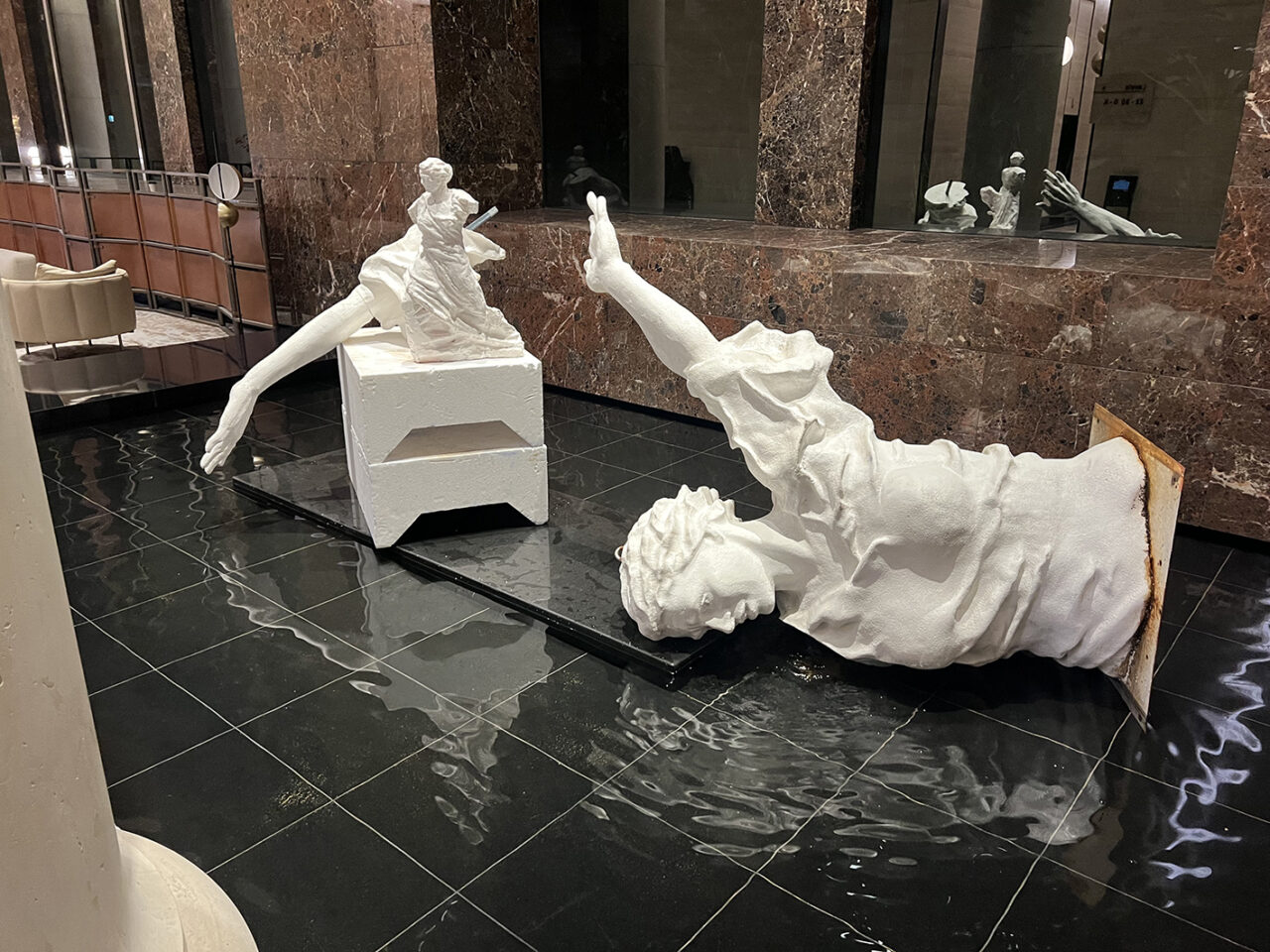Collins 101 West pools, Melbourne
May – October 2023
Polystyrene, plaster, steel, cement, sand, imitation gold leaf, acrylic, pigment, glue.
The Theatre of Folly installation at Collins 101 West pools is part of the series titled Call to Peace (March 2022 – ongoing), which has responded to the outbreak of the devastating war in Ukraine. The series has evolved through various installations and socially engaged public art projects, where Nina has used her art to call for peace and remind us of the devastating impact of past wars and flawed political systems.
The sculptures are particularly poignant, as they reference an existing WWII bronze monument by the same name, created by the prominent Soviet sculptor Valentin Topuridze in 1948. His original sculpture of a dynamic, windswept, female V-shaped figure in turn references the famous Greek sculpture of Hellenistic era – winged goddess of victory, Nike of Samothrace, dating to 2nd century BCE. By incorporating this historical reference into her work, Nina urges us to reflect on the lessons of the past and consider the ways in which we can work towards a more peaceful future.
Nina’s installation presents multiple variations of her Call to Peace female figure, uncannily distorted by size and scale, subverting the traditional methods of replication and seriality that are often used in propaganda. From the grand and extravagant surreal-ised blue and gold iteration, the figures are gradually reduced to a shattered and graffitied concrete form, to a dismantled and dismembered, rusting monument. These transformations allude to the passage of time and the dramatic historical developments that have taken place invoking destruction, conflict and atrocity.
However, the Call to Peace sculptures take on an entirely new meaning when placed within the context of the Collins 101 building highlighting the interplay between art and architecture and how the context in which art is presented can impact its meaning. These ruins of socialist art inserted within the context of emblematic capitalist headquarters seem oddly at ease with each other, blending seamlessly in an identical style and begging the question of what do the opposing isms might have in common.
Nina challenges perceptions of value and worth by using cheap, scrap materials to create grandiose-looking sculptures that deceive the viewer through the paradox of materiality. Here, the humble polystyrene sculptures can be taken for real gold, concrete and marble. The prop-like quality of Nina’s work provides a foil to the pomposity and glitz of the surrounding Post-Modernist architecture with its theatrical non-supporting columns and watery reflections.
Through her art, Nina Sanadze invites viewers to engage with complex historical and political issues, challenge our perceptions and spark new ways of thinking about the relationship between art, materiality, place, meaning and context, and to consider the ways in which art can be used as a powerful tool for social change.




